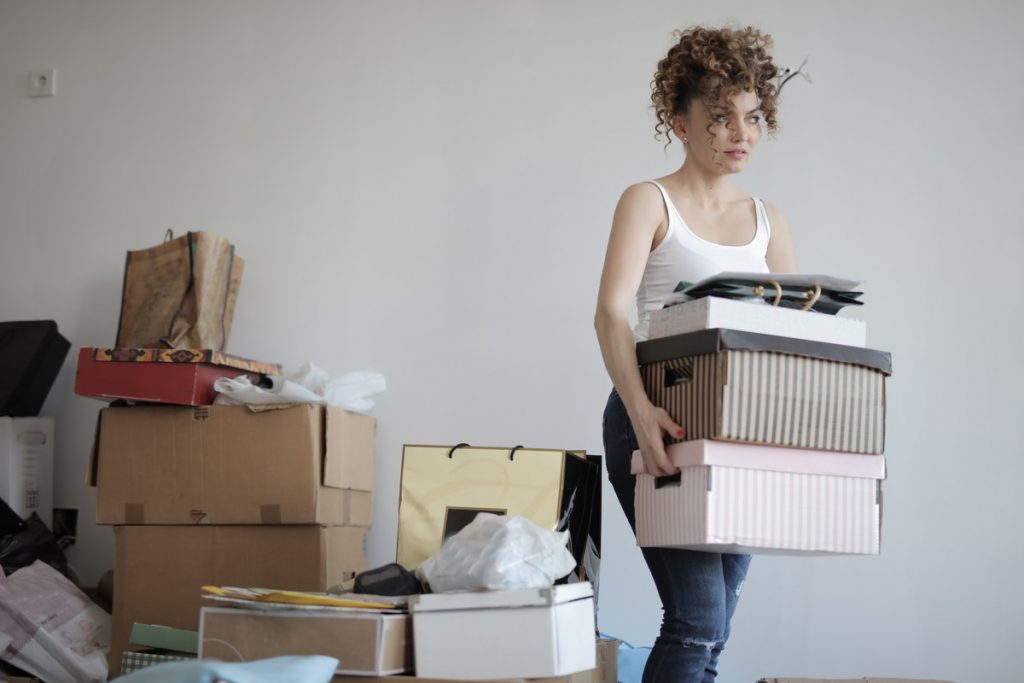When people think of a minimalist style or minimalist home, they usually define it as an aesthetic that uses a monochromatic color palette and clean, open spaces. It’s all about living with less, from furniture to decor to personal stuff.
As such, people with minimalist homes don’t just tone down their home’s furnishings. They also tone down their purchasing habits. Monthly, holiday, or seasonal sales in department stores don’t faze them as much as most people do. If they have to buy large quantities of something, it’s probably just food, which they’d consume quickly so that it won’t suffocate their fridges and pantries.
But even hoarders have fallen for the beauty of a minimalist home design. Indeed, it’s cleaner, more open, and easier to maintain. The less furniture and personal things you have, the shorter the time you’d spend organizing stuff. But how could you survive in a minimalist home when you have heaps of things? While de-cluttering is an option, it’s not always your fault you own plenty of stuff. Artists, for instance, need multiple art gadgets, tools, sketchbooks, and more. The same goes for small business owners dealing with piles of important documents and inventory.
Luckily, your career or lifestyle is never a hindrance to having a minimalist space. By using these hacks below, you’d finally control your hoarding and learn to live with less.
1. De-clutter One Room at a Time
It’s easy to feel overwhelmed with the amount of stuff you need to get rid of, so start with one room first. If that still rattles you, clear off an entire collection at a time, like your wardrobe. Sort out your clothes into boxes labeled “to dispose of”, “to keep”, and/or “to donate”. Avoid keeping stuff “for now”, because chances are it’s going to collect dust for another year or so. Immediately decide what you’re going to do with an item, whether you’re going to keep it, throw it away, or donate or sell it.
2. Scale Down Your Collections
Collectors dread the idea of parting ways with some of their precious purchases. For instance, maybe you collect the albums of your favorite K-pop bands. While your stash deeply represents your love for their music and artistry, perhaps other fans will benefit more from some of those albums now. If you no longer pay as much as a glance at some of your albums, it’s time to let them go and sell them to your fellow fans. And from now on, establish a limit for your hoarding. Once your albums or any other stuff starts to compromise your space, it’s a sign to host a garage sale.
3. Know What Minimalism Means to You

Assuming that you’ve successfully de-cluttered your space now, research more about minimalism next to find out what it truly means to you. Different professionals have different definitions for it. For Sharon Blaustein of B Interior LLC, minimalism is about keeping a space simple, uncluttered, and accentuating the attractive architectural features. Meanwhile, for Joshua Becker, the blogger behind Becoming Minimalist, it is the intentional promotion of the things we value most, and the elimination of the ones that distract us the most.
You’ve probably noticed the common denominator between those two distinct definitions. It’s the emphasis of cleanliness in a space. But you may feel free to add your own elements to it, especially if your creativity nags you to do so. For example, maybe you believe that your choice of flooring also determines how minimalist your space is, so you’d replace your tiles with new and high-quality Westex carpets. After all, minimalists also value quality and long-lasting purchases over cheap ones.
4. Keep Furnishings Simple
A good hack to refrain from buying too much home decor is keeping your furnishings simple so that the existing pops of color will already serve as decorations. For example, by choosing light-colored sofas, paint colors, and tables, your colorful throw pillows will accentuate the space or even become the focal point. Remember that minimalism is focused on functionality, so you don’t need excessive decor in the first place. Narrow down your options to plants, simple wall decor, candles, and statement light fixtures. They’re all decorative, but still essential for everyday living.
5. Be Grateful
Lastly, the ultimate hack for learning to live with less and appreciating it is practicing gratefulness. Don’t think about what you lack. Think about how much you have. Some items from your collections may have found new homes already, but you’re living well and more sustainably as a result. So every time you’re tempted to hoard again, pause and realize how much abundance you’re enjoying already, and you’d smother that temptation.

